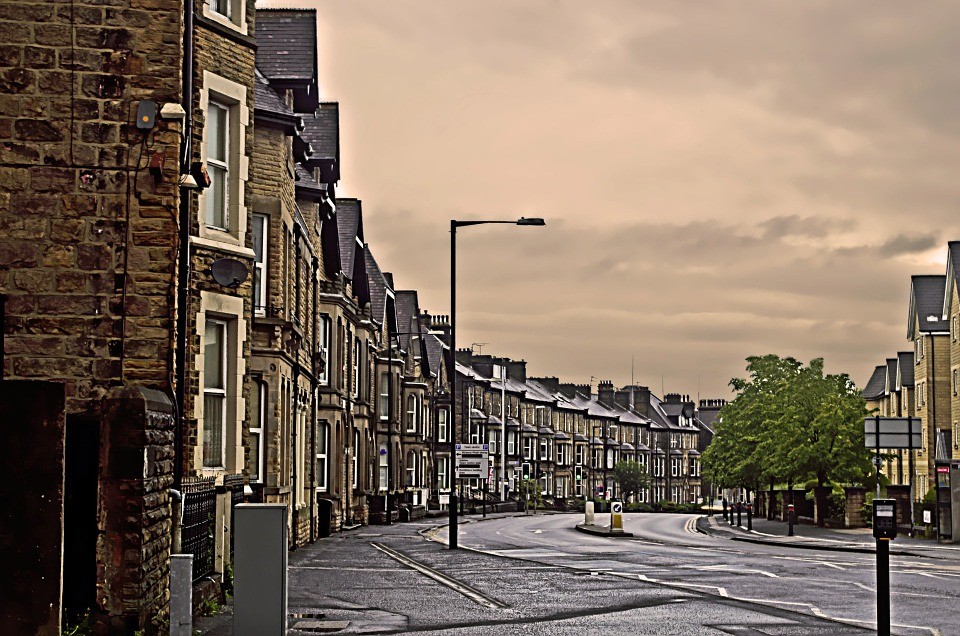Scotland dominates list of UK property hotspots in 2018
Glasgow and Edinburgh have seen house prices rise faster than any other major UK town or city in 2018, according to Housesimple.com.
Using the latest HM Land Registry data, the online estate agents looked at average house price growth in more than 100 major UK towns and cities since the start of 2018 to September 2018. Continue reading
Millennials exiting London fuels rental growth in Manchester, Birmingham and Leeds
Rents in other UK cities are growing faster than both London and the UK average as workers relocate from the capital amid rising living costs.
That’s according to the third edition of the National Rent Review by buy-to-let lender Landbay, supported by rental analytics from MIAC.
The national picture
UK rents rose by 0.03% in November 2018 which, although the lowest monthly rise since the beginning of the study, adds to the growth of 0.97% in the year and is 0.04% higher than the
same period in 2017. This is mostly down to London’s improved performance – a growth of 0.58% this year. The average monthly UK rent currently sits at £1,212, a rise of £10 since the start of the
year. Excluding London, rents sit at £769 since the beginning of 2018. Continue reading
Property in the UK takes on average 102 days to sell
It now takes, on average, 102 days to sell a property in the UK, according to Post Office Money.
Its latest ‘City Rate of Sale’ report, developed with the Centre for Economics and Business Research (Cebr), looked at the average time it takes for a property to sell in 35 major UK cities. Overall, the average seller had to wait one week more before receiving an offer – increasing from 96 days in 2017. Continue reading
New build property values are now exceeding value of existing properties
The value of new-build properties is beginning to outstrip the value of existing properties, according to a study by DJ Alexander Ltd.
The property management firm found that over the last year the average value of new build properties in the UK has increased by 8.5% at a time when existing property values only rose by 2.9%.
This was most prominent in Wales, where the value of new builds increased by 10.2% over the last year, while Northern Ireland was the lowest at 4.8%. The greatest increase in average value for existing properties occurred in Scotland, where prices rose by 4.4%, while England was the lowest at 2.8%. Continue reading
Uncertainty over Brexit leads to many British expats returning home
The number of British expats living in Spain has dropped by 40%, according to Spanish newspaper El Pais.
What’s more, between 2012 and 2017, the number of Britons leaving Spain outstripped those who arrived. This exodus is being blamed on the uncertainty caused by Brexit and worries over what will happen once the UK has officially left the European Union, as well as the price of sterling falling against the euro, which has made living overseas more expensive than ever. Continue reading
Decision to scrap Severn Bridge toll leads to property price boom in South Wales
There has been a dramatic rise in property prices in south east Wales since last year’s announcement that the Severn Bridge toll would be scrapped, research by online estate agents Housesimple.com has revealed.
Figures from Land Registry examined by Housesimple.com show that average sold house prices across the three Welsh local authorities closest to the Severn Bridge – Monmouthshire, Newport and Torfaen – have increased by 13.2% since the decision on the toll bridge was made in the summer of 2017. This equates to over four times more than the rise in average prices across the UK over the same time period. Continue reading
Ireland still Europe’s number one buy-to-let hotspot
Ireland has retained its position as Europe’s most attractive destination for buy-to-let investors for the third year in a row, according to research by WorldFirst.
In the third annual European Buy-To-Let League Table from the international payments firm, Ireland was top of the pile in Europe for investors looking to maximise rental returns. An average rental return of 7.69%, continued economic growth, consistent demand for rental properties, the stability of the euro and reasonable property prices has all helped to keep Ireland top of the table.
Cyprus, meanwhile, was the biggest climber – rising from 9th to 2nd place – while Belgium slid down the table from 6th to 12th. Sweden, which had finished bottom for the last two years, rose one place, with France replacing it at the foot of the table. Continue reading
Seaside town revealed as the UK’s top buy-to-let destination
Southend-on-Sea is the UK’s number one buy-to-let hotspot, according to research carried out by independent mortgage broker Private Finance. Continue reading
Property investment outlook remains positive despite Brexit uncertainty
The outlook for property investment in the UK remains positive, despite the ongoing uncertainty surrounding Brexit negotiations. That’s according to a panel of industry experts interviewed by The Finance Professional Show. Continue reading
Rents rise rapidly in areas surrounding Elizabeth Line stations
New research has revealed that average rental growth around the stations of the Elizabeth Line (excluding zone 1) has been more than double the London average since 2012.
Rents along the line have increased by 16.38% in comparison to the London average of 8.20%, according to the findings by Landbay. One of the UK’s largest transport infrastructure projects, the £15 billion Crossrail scheme has been well known in recent years for the ‘Crossrail effect’ – with many areas along the line experiencing an economic boost, significant regeneration and upped house prices and rents.
The Elizabeth Line, which was set to be completely operational by December this year, will now open fully to commuters in the autumn of 2019 following a delay to the original planned opening date. A spokesman for Crossrail Limited said that more time was needed to complete ‘final infrastructure and extensive testing’ and make sure a safe and reliable route was delivered for passengers.
It’s hoped, once complete, that the Elizabeth Line will offer a boost to London and the South East by lowering commute times and improving access to jobs located in the centre of the capital. With the project only a year away from completion, the Landbay Rental Index has examined the impact it is already having on rental growth along the new rail network. Rents in the areas surrounding the 38 stations analysed along the Elizabeth Line (discounting zone 1) rose from an average of £1,193 in January 2012 to £1,376 in June 2018.
On average, then, tenants have had to pay out an extra £2,196 this year compared to when construction began in 2012. The largest rent increases have been witnessed in areas to the east of zone 1, with average growth of 17.22% since 2012. Meanwhile, areas to the west of zone 1 have seen rental growth of 15.38%. This contrasts starkly with London as a whole, which has mostly experienced a slowdown in rental growth over the same time period – only rising by 8.20%.
Certain areas have experienced more growth than others. Three areas surrounding Elizabeth Line stations have witnessed rents grow more than 30% since 2012, with Southall seeing the biggest rise (up by 38.19%). Southall was closely followed by Manor Park and Romford, which have witnessed rents growing by 37.24% and 30.47% respectively.
Since 2012, rents rising between 20-29% has also been seen in the surrounding areas of eight stations on the incoming line, including Abbey Wood (26.51%), Ilford (27.24%), Seven Kings (26.09%), Goodmayes (25.18%) and Chadwell Heath (27.35%) on the eastern section, and Burnham (26.02%), Iver (28.03%) and Hayes & Harlington (21.05%) on the western section.
Just three areas surrounding Elizabeth Line stations have seen rents decline since 2012, with rents in Taplow falling by 2.02%, by 0.9% in Canary Wharf and by 6.51% in Maryland. “The Elizabeth Line will improve access to the centre of London for thousands of commuters, but it comes at a premium for renters,” John Goodall, chief executive of Landbay, commented. “The prospect of better transport links is creating higher demand for property in these areas. As a result, house prices and rents alike have increased, which for many landlords is an attractive proposition due to the prospect of extra return on investment.”








